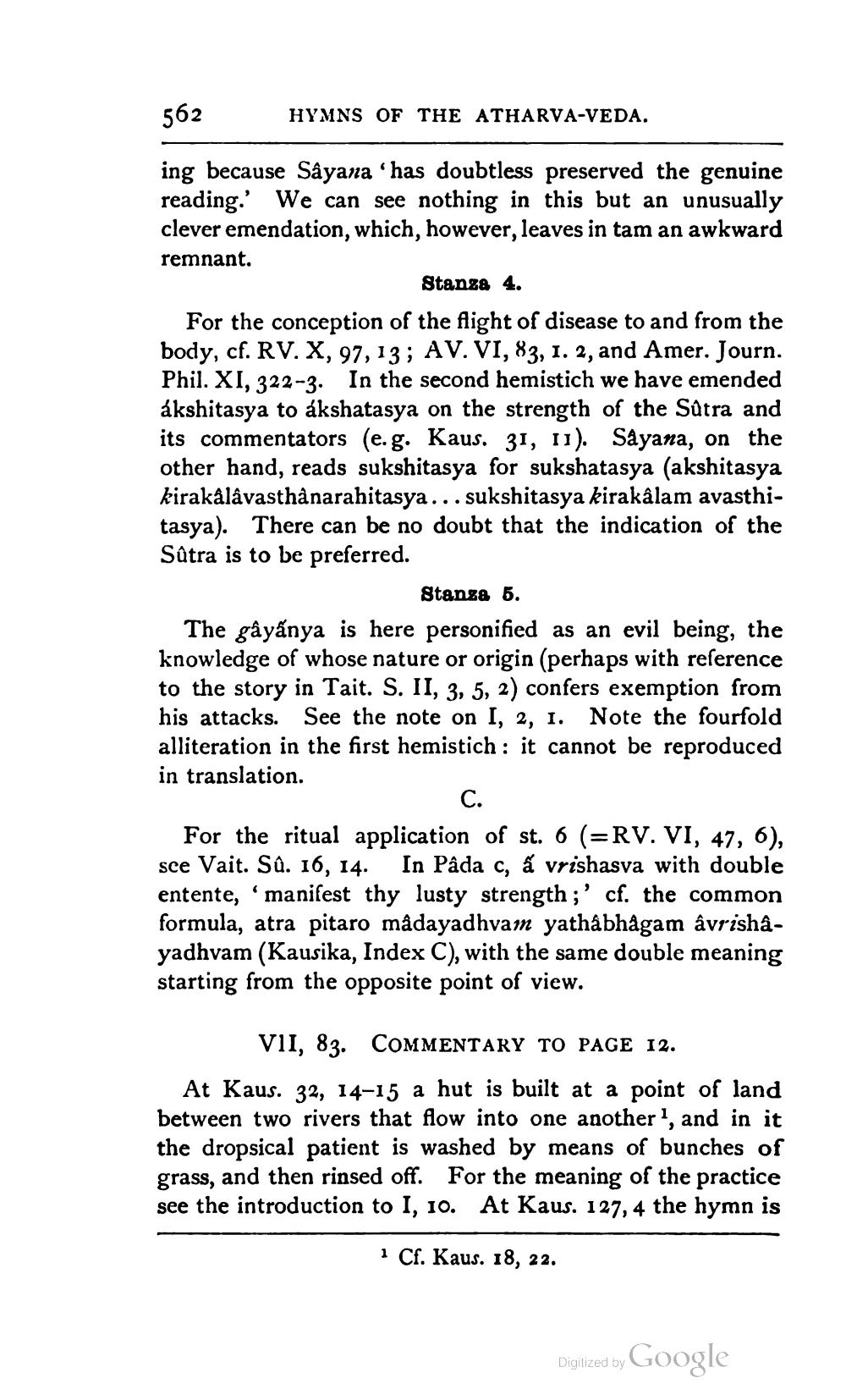________________
562
ing because Sâyana 'has doubtless preserved the genuine reading.' We can see nothing in this but an unusually clever emendation, which, however, leaves in tam an awkward remnant.
HYMNS OF THE ATHARVA-VEDA.
Stanza 4.
For the conception of the flight of disease to and from the body, cf. RV. X, 97, 13; AV. VI, 83, 1. 2, and Amer. Journ. Phil. XI, 322-3. In the second hemistich we have emended ákshitasya to ákshatasya on the strength of the Sûtra and its commentators (e. g. Kaus. 31, 11). Sâyana, on the other hand, reads sukshitasya for sukshatasya (akshitasya kirakâlâvasthanarahitasya... sukshitasya kirakâlam avasthitasya). There can be no doubt that the indication of the Sûtra is to be preferred.
Stanza 5.
The gâyanya is here personified as an evil being, the knowledge of whose nature or origin (perhaps with reference to the story in Tait. S. II, 3, 5, 2) confers exemption from his attacks. See the note on I, 2, 1. Note the fourfold alliteration in the first hemistich: it cannot be reproduced in translation.
C.
For the ritual application of st. 6 (=RV. VI, 47, 6), sce Vait. Sû. 16, 14. In Pâda c, a vrishasva with double entente, manifest thy lusty strength;' cf. the common formula, atra pitaro mâdayadhvam yathâbhagam âvrishâyadhvam (Kausika, Index C), with the same double meaning starting from the opposite point of view.
་
VII, 83. COMMENTARY TO PAGE 12.
At Kaus. 32, 14-15 a hut is built at a point of land between two rivers that flow into one another 1, and in it the dropsical patient is washed by means of bunches of grass, and then rinsed off. For the meaning of the practice see the introduction to I, 10. At Kaus. 127, 4 the hymn is
1 Cf. Kaus. 18, 22.
Digitized by
Google




